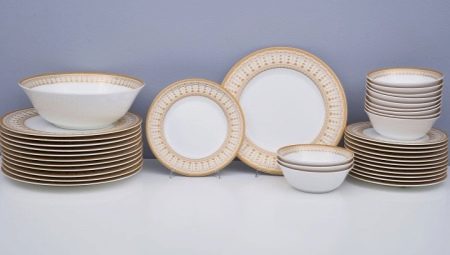Today, in any store you can find table plates - they are made from a variety of materials, each of which has its own advantages and disadvantages. Consider how metal dishes differ from ceramic, and what are the pros and cons of faience. And also talk about the features of porcelain, glass, plastic and other types of dishes.
Main varieties
The most popular materials for making dishes include porcelain, earthenware, ceramics and glass. It is worth stopping at each type separately.
China
Depending on the method of applying the painting, several varieties of porcelain are distinguished. The most expensive is considered a manufactory, which is decorated manually - its price is so high that it is commensurate with the cost of Rolls-Royce. Porcelain dishes can be decorated with a decal - these are relief ornaments that are applied using engraving or perforation. Bone China is very much appreciated. However, most often porcelain is not painted, since this material itself looks quite solemn.
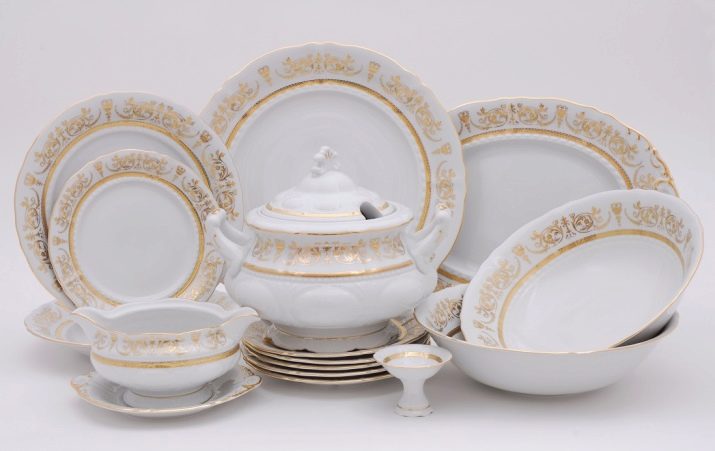
Basically, plates are made in white, as this is the favorite shade of most designers these days. In addition, this dishware is universal - it can be combined with any tablecloth and any style of dining room. A slight deviation from white in the form of a fringing of a golden or blue shade is allowed - the main thing is that your plates blend harmoniously with other cutlery. For example, if the dishes are decorated with gold ornaments, then it will be useful to put gilded spoons, forks or other objects on the table.
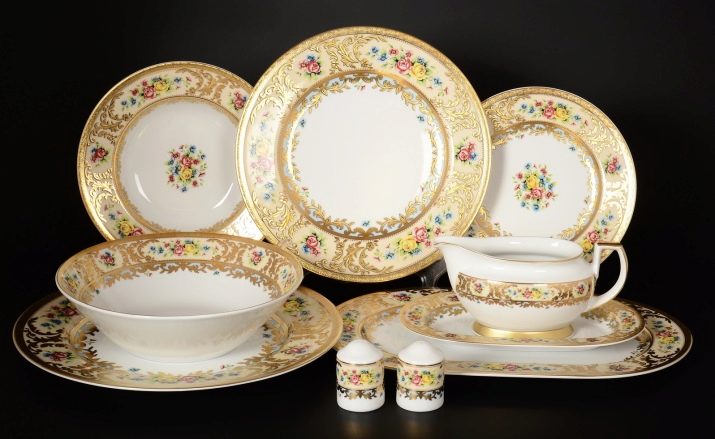
Porcelain has a number of undeniable advantages.
- Inertness in contact with chemicals. Under the influence of food acids and alkalis, as well as detergents, the material does not lose its properties.
- Versatility. Porcelain tableware looks relevant in any interior, it is higher than fashion trends, so it can look stylish for many decades.
Of the minuses of porcelain plates, exposure to the influence of elevated temperatures is distinguished: plates are not recommended to be washed with hot water, food cannot be heated in them.
Porcelain dishes are used exclusively for serving. In addition, with prolonged daily use, the material may darken.
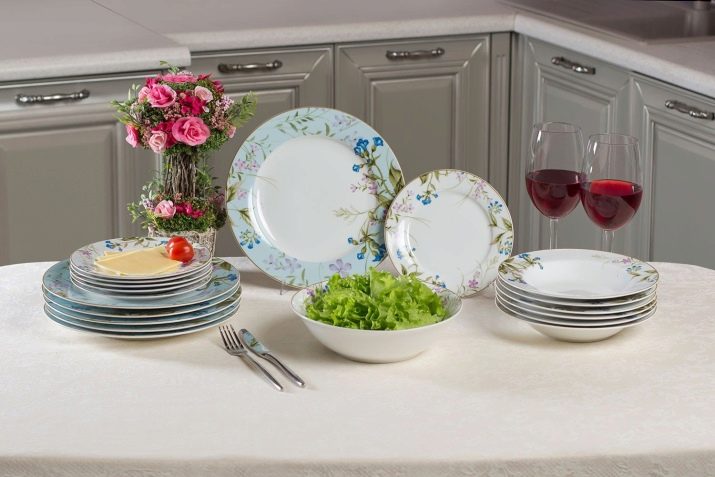
Faience
Faience has long been called a cheap analogue of porcelain. Plates made of this material usually have rounded or compacted edges, they are durable and very convenient, therefore they are optimal for holding large festive feasts. It is easy to distinguish faience from porcelain - if you hit a porcelain plate with a wooden stick, you will hear a high melodious sound, and the faience responds muffledly.
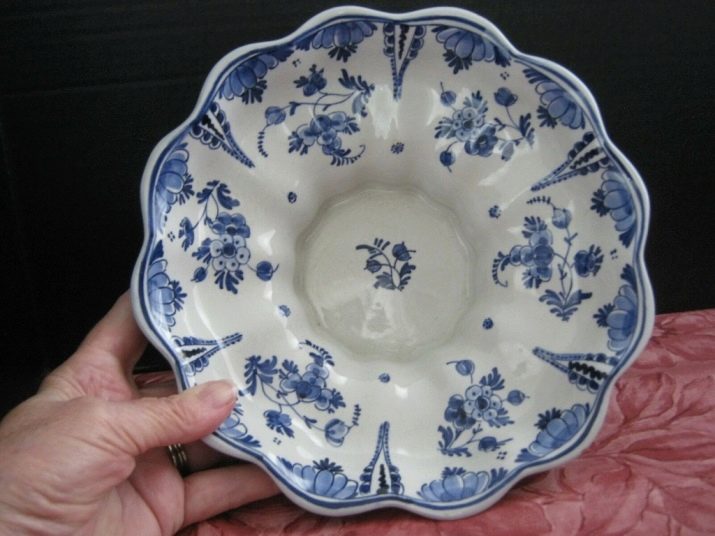
From a chemical point of view, faience is a mixture of spar, quartz and kaolin, moreover, the latter accounts for about 85%, which gives the material a porous structure and determines the significant advantages of the material:
- low price - dishes from faience are available to the vast majority of Russian families;
- heat holding ability: cooked meals, laid out in earthenware plates, they transfer their heat to them, and the dishes, in turn, maintain the necessary temperature of the dish.
At the same time, faience, like porcelain, does not tolerate too high temperatures.
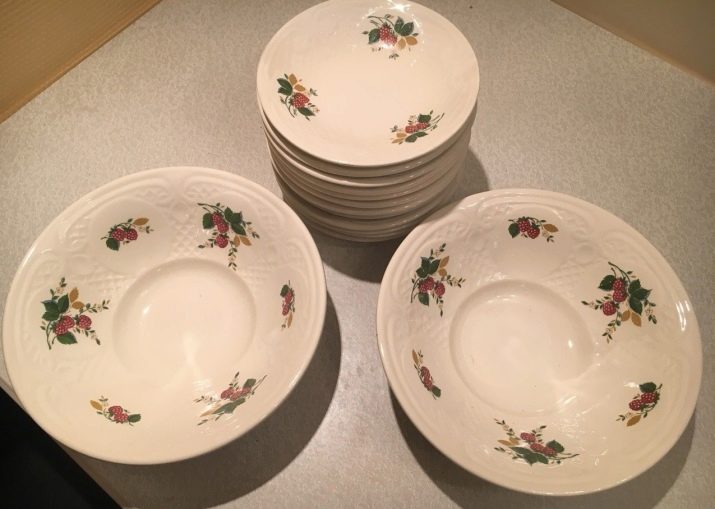
Ceramics
The main advantage of ceramic dishes is that it has the ability to control the level of humidity and heating. Ceramic plates can keep the broth hot for a long time, and the chilled okroshka in them will not heat up. In clay plates, it is allowed to heat food in the microwave, and they can also be put in the oven if necessary.
Ceramic dishes have many advantages that customers around the world appreciate:
- environmentally friendly composition;
- heat-resistant surface;
- uniformity of heating;
- ease of care.
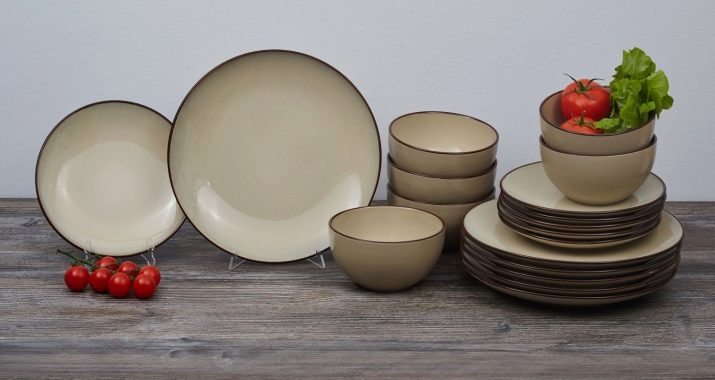
It is important that ceramic plates are chemically inert: when interacting with acid-base solutions, they do not change their composition and do not emit hazardous substances, which means that they can be safely used for serving adult and children's tables. Plates made from a mixture of clay with mineral additives have the property of moisture exchange: due to the highly porous structure, the plates absorb and accumulate moisture, and then give it to the products.
The main disadvantage of ceramic plates is the difficulty in maintenance. The fact is that it is almost impossible to clear fat from such surfaces. In addition, it absorbs all odors and does not tolerate temperature extremes - for example, if you pour hot soup into a cold plate, it will crack immediately. In general, ceramics are a rather fragile material: even with a slight physical impact, chips are formed on its surfaces.
Polymer clay is not used for the manufacture of dishes.
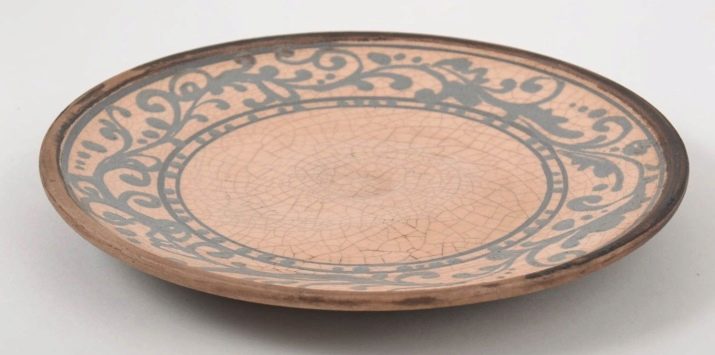
Glass
Glass utensils can be transparent or colored, its edges are always smooth, with a slight impact glass cutlery emit a delicate melodic sound. Most often, glasses are made of glass, this material is also suitable for the production of plates, although glass ceramics are mainly used. The popularity of glass products is due to low thermal conductivity, so that food stays warm longer than when using other types of dishes. Glass is easy to clean, and any cleaning agents, including abrasives, are allowed to clean it.
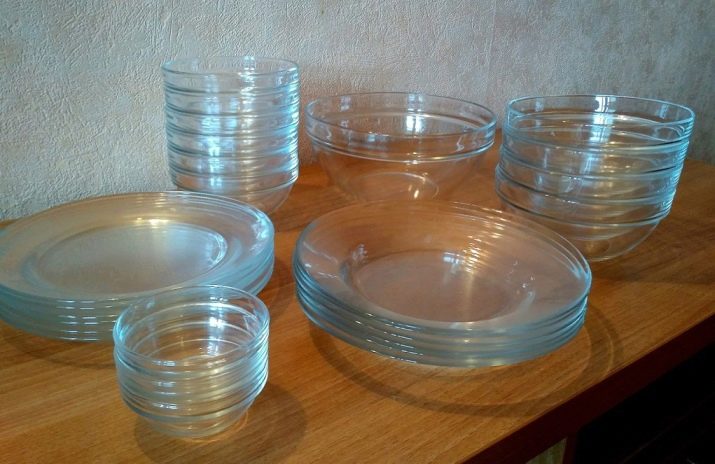
However, if you choose glass plates, keep in mind that they are very fragile and you need to be careful with them.
Yes, and with the choice of tablecloths will have to suffer - it should be combined not only with the dinner service, but also with the contents of the plate. For example, if you lay a pink tablecloth on a table, then the ham laid on a plate will simply merge with it.
Alone are the plates, which are made of crystal - this is the most expensive material after gemstones. Such devices are most often used for table setting and serving cold dishes - salads, fruits, sweets. If you expose the crystal to temperature, it will become coated and cloudy. At the same time, the material is much stronger than glass, characterized by high strength and spectacular appearance.
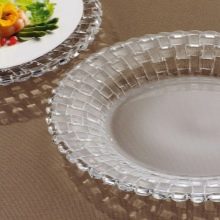
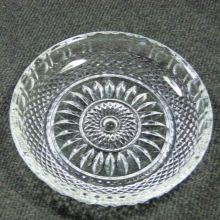
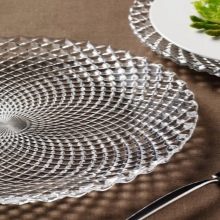
Other materials
In addition to the materials already described, plates can also be created from corian, metal and plastic. Such varieties are less in demand, but they are still available.
Korian
Sometimes, the achievements of modern chemistry are used to produce plates, thanks to which the most unusual materials are born. Among them, an artificial stone, called Corian, stands apart. Due to its exceptional appearance and physical and operational properties, you can get the most beautiful, durable and easy-to-care plates.
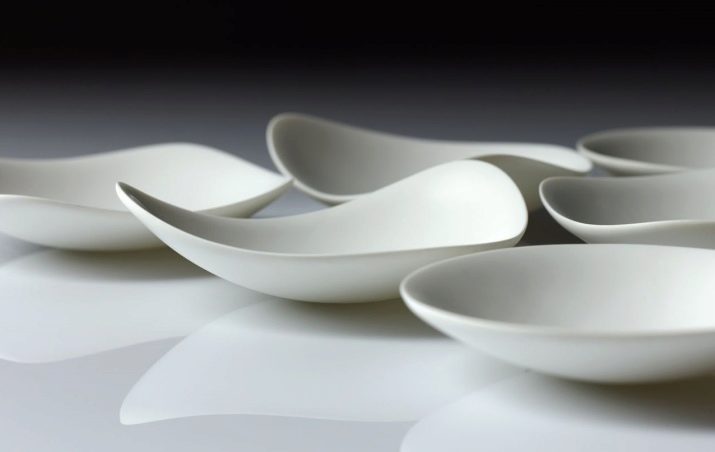
Metal
Typically, forks, spoons and knives are made of metal. In the production of plates, aluminum, steel and stainless steel are used extremely rarely - these are, rather, decorative devices or camping enameled options that are not recommended to be placed on the table as a daily option. If you don’t like to go camping too much, then in the existing iron containers you can store food for a short time. The same applies to stainless steel products.
Do not put such dishes in the microwave. But cast-iron and copper plates have sunk into the distant past - now such products can be found only in private collections and museums.
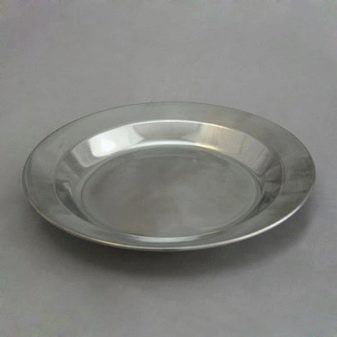
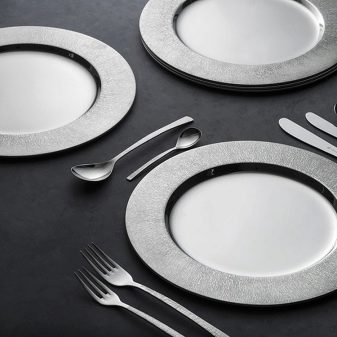
Plastic
Plastic is a cheap and practical material that is used to make reusable and disposable tableware, including plates. They are easy to wash, convenient to store, and they cost less than all other types of dishes.
Nevertheless, for a long time, environmentalists have claimed that plastic is not safe for the environment: it slowly decomposes, releasing hazardous substances into soil, water and air. This led to the fact that in many countries it was forbidden to use this material for the manufacture of dishes, in particular, This year, a law was passed prohibiting the production and distribution of plastic dishes in the EU - it will enter into force in 2021.
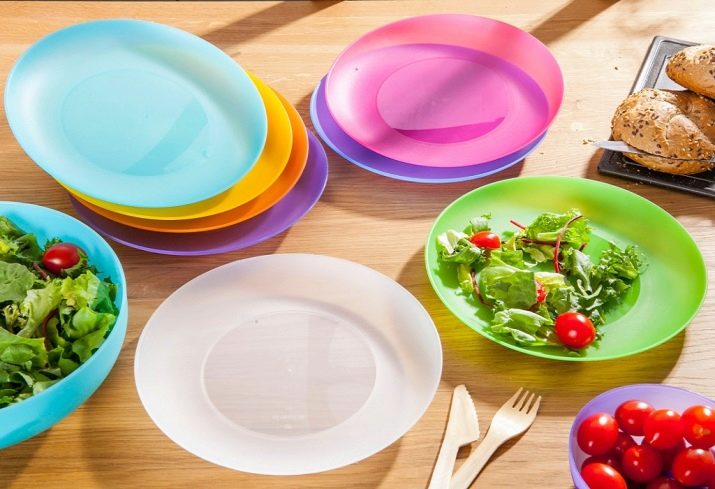
You can watch the video below on how to choose high-quality tableware.
